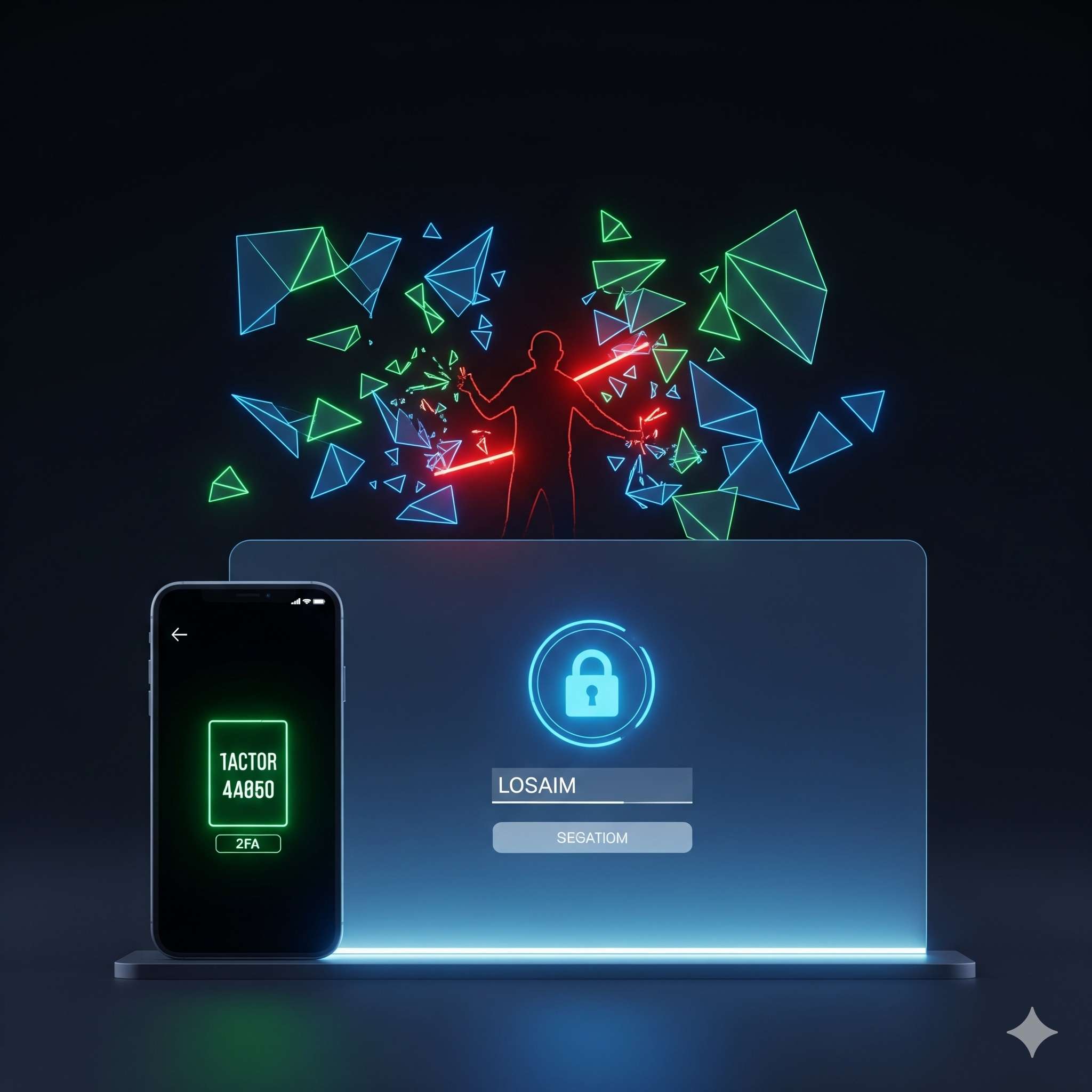- 2 September 2025
- No Comment
- 234
Think 2FA Keeps You Safe? Hackers Know Better

For a long time, I believed my online accounts were untouchable. I had done everything security experts and platforms recommended: strong passwords, PIN codes, two-factor authentication (2FA), and linking all my accounts through my trusted Google account. Like most of us, I felt safe.
That belief was shattered one night. Just before going to bed, I casually opened my LinkedIn app. What I saw nearly stopped my heartbeat. My account was unrecognisable, everything was in Chinese or Japanese, my phone number had been replaced, and my profile had turned into something completely different. A random female model’s picture stared back at me, my name had changed, and dozens of connection requests had been sent to Chinese professionals.
I was shocked and confused. How could my phone number be changed without me knowing?
Where was the 2FA protection I trusted so much?
In panic, I turned to my Google account first, quickly changed all my passwords and reviewed security steps. Then I used my phone’s camera to translate LinkedIn back into English so I could at least understand what was happening. I launched a complaint to LinkedIn support and tried multiple times to fix my phone number issue.
For the next three days, I kept changing my Google password because suspicious login attempts kept appearing, all tied to that hacked phone number.
Complaint on LinkedIn finally worked, but not without endless frustration.
That’s when it hit me: 2FA is not the ultimate shield we think it is. Hackers can still break through it.
Since then, I’ve wiped my browser memory, cleared saved passwords, disabled autofill, and even reinstalled Windows to make sure no Trojan was hiding in my system. It was a painful lesson, but one that taught me the hard truth, 2FA alone is not enough.
That’s when I decided to dig deeper into how attackers bypass 2FA and what ordinary users like us can do to stay ahead.
How Hackers Bypass 2FA
-
Phishing Tricks (The Classic One)
The simplest attack is still the most common: fake websites. You enter your password and 2FA code thinking it’s real, but hackers grab both instantly.
Stay safe: Always check the website link carefully. A password manager helps, it won’t autofill on fake sites.
-
SMS Codes (The Weakest Link)
Getting a login code by text feels safe, but it’s easy to steal. Hackers can do a SIM swap, moving your number to their phone, or exploit flaws in telecom systems to reroute your texts.
Stay safe: Add a PIN with your carrier, or better, stop using SMS for 2FA. Use authenticator apps (Google, Microsoft) instead.
-
Push Notification Spamming
Some hackers keep sending login requests to your phone until you’re annoyed enough to hit “approve.” One wrong tap, and they’re in.
Stay safe: Only approve requests you made yourself. If you keep getting spammed, change your password immediately.
-
Real-Time Proxy Attacks (The Sneakiest One)
Hackers create fake login pages that act as “middlemen.” You log in normally, but the attacker logs in at the same time, without you knowing.
Stay safe: Use phishing-resistant options like hardware keys or passkeys when available.
-
Weak Spots in Hardware Keys
Hardware keys are very secure, but some services allow shortcuts, like approving from another device. Hackers can abuse those gaps.
Stay safe: If you use a security key, make it your only login method and turn off fallback options.
Should You Still Use 2FA?
Yes, absolutely. Even with weaknesses, 2FA blocks most attacks. Think of it like a lock on your door. A thief might break it, but they’ll usually go after the house with no lock at all.
The Future: Passkeys
Big tech companies are pushing passkeys—a new login method that uses your device and biometrics instead of passwords or codes. They can’t be stolen through phishing or SIM swaps. It will take time to become common, but it’s the direction we’re headed.
Quick Safety Tips
- Avoid SMS codes if possible.
- Add a PIN with your mobile carrier.
- Don’t approve login requests you didn’t start.
- Check website addresses carefully.
- Try passkeys when available.
2FA isn’t perfect. Hackers know ways around it. But turning it off is worse; it’s like leaving your front door wide open.
The smart move is to keep using 2FA, but wisely. Combine it with good habits and stay alert, and you’ll make your accounts much harder to hack.
Read more: Success Story of NVIDIA: The $4 Trillion Comeback
Nvidia. Led by its bold, leather-jacket-wearing CEO Jensen Huang, Nvidia is now valued at over $4.2 trillion—a figure larger than Apple at its peak, bigger than Microsoft, and greater than the GDP of most countries on Earth.
How Nvidia Went From 30 Days from Bankruptcy to the Heart of the AI Revolution?
